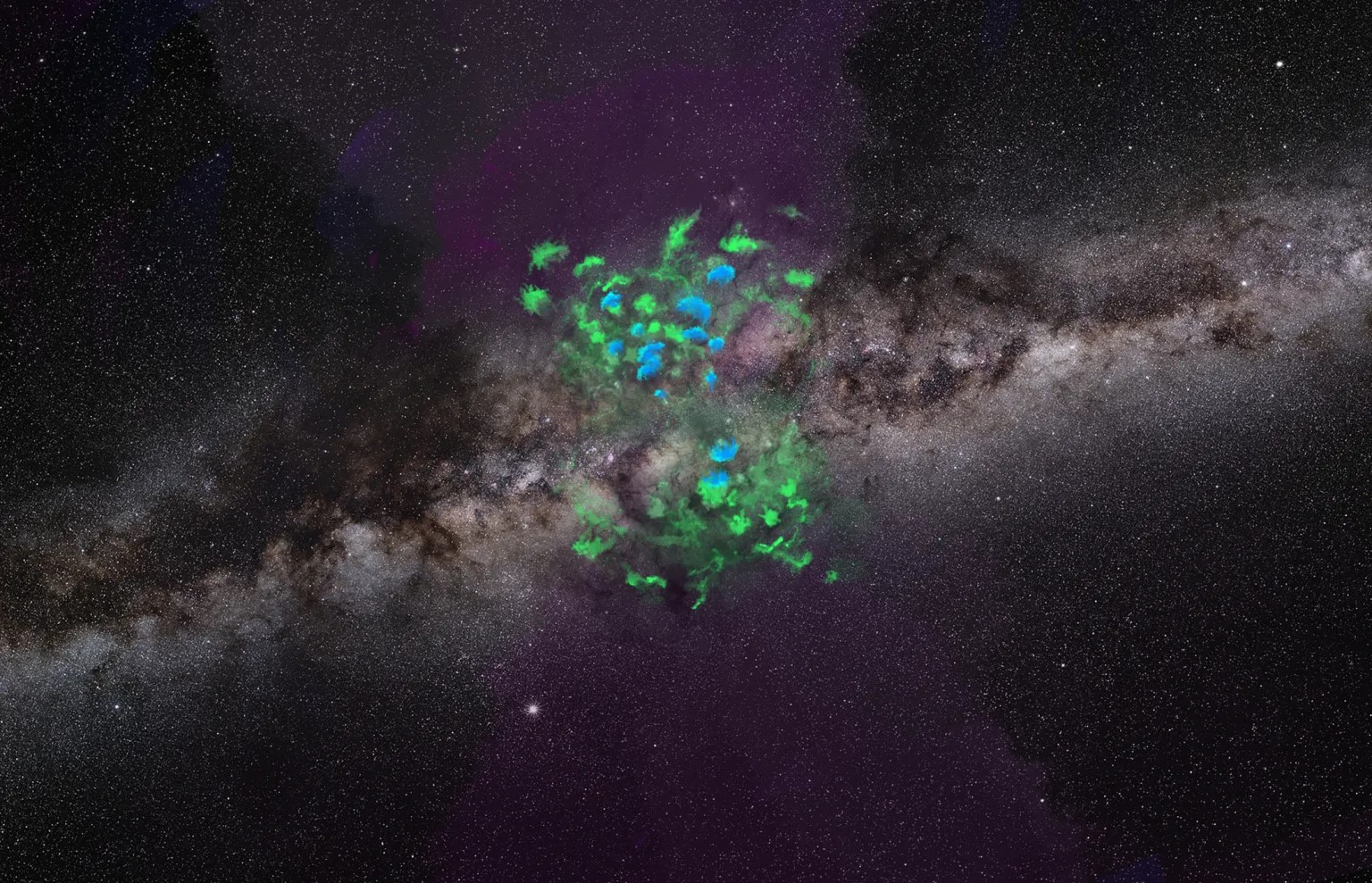The U.S. National Science Foundation National Radio Astronomy Observatory (NSF NRAO), in partnership with several leading Mexican universities and research institutes, has announced a series of landmark agreements and meetings aimed at advancing Mexico’s role in the Next Generation Very Large Array (ngVLA) project.
Recent News
Astronomers Discover a Superheated Star Factory in the Early Universe
Astronomers have uncovered a previously unknown, extreme kind of star factory by taking the temperature of a distant galaxy using the ALMA telescope. The galaxy is glowing intensely in superheated cosmic dust while forming stars 180 times faster than our own Milky Way.
Astronomers Share Largest Molecular Survey To-date: GOTHAM Legacy Data Goes Public
Astronomers in the “GBT Observations of TMC-1: Hunting Aromatic Molecules” research survey, known as GOTHAM, have released a spectral line survey with largest amount of telescope time ever conducted, charting more than 100 molecular species only found in deep space.
Massive Gas Clouds Escape Center of Milky Way

Artist’s conception of the clouds flowing out from the center of the Milky Way, entrained in a very hot wind that has accelerated them to velocities of many hundreds of kilometers per second. Most of the clouds have been detected by the Green Bank Telescope through their radio emission from hydrogen, but a few (indicated in blue) are now known to contain molecular gas as well. The clouds were blasted out of the Milky by processes associated with star formation or the central black hole. Credit NSF/GBO/P.Vosteen.
Green Bank Telescope Discovers Hundreds of Clouds Blasting into Interstellar Space
The National Science Foundation’s Green Bank Telescope has discovered over 250 gaseous clouds being blasted out of the center of the Milky Way into interstellar space. This research was presented today at the 243rd meeting of the American Astronomical Society’s (AAS) in New Orleans. A decade ago, astronomers weren’t aware of this phenomenon. It took years of observations, and some surprising finds, to produce this latest result.
It has been known for some time that energetic processes in the center of the Milky Way have created fast, hot winds expanding into intergalactic space with temperatures of millions of degrees and velocities of thousands of kilometers per second. Most large galaxies have winds like this.
The accidental discovery that some of this outflowing hot gas has entrained cold hydrogen clouds was made by the Australian ATCA telescope measuring the 21cm radio emission emitted by interstellar hydrogen atoms. This implied that there could be an undiscovered population of clouds carrying matter out of the nucleus of the Milky Way.
The hydrogen clouds are important on their own, but they also serve as probes of the hot wind.
It is difficult to measure conditions within the very hot wind, but the cool clouds can trace it in the same way that on Earth, a handful of leaves tossed upwards can show the direction and speed of the local wind.
The GBT’s sensitivity make it the ideal instrument for detecting faint signals from interstellar hydrogen, but mapping these clouds, and realizing their true extent, was no easy feat. “It took years using the GBT to systematically map hundreds of square degrees in search of faint hydrogen emission,” shares Jay Lockman, senior astronomer at the Green Bank Observatory, “Once we identified some promising candidates, we could follow up with targeted observations at other telescopes to show us more.”
“The clouds must have been ripped from an area near the very center of the Milky Way and flung outward, either by a burst of star formation or activity of a black hole,” explains Lockman. Some of these clouds have the highest outflow velocity of any clouds ever observed in the Milky Way, and may escape the galaxy.
In an unexpected twist, new data from the APEX telescope in Chile has revealed that some of the hydrogen clouds contain molecules and dense cold gas. “No one would have expected that clouds violently ejected from the Milky Way could harbor relatively fragile molecular material, but there it is,” said Lockman. Recently the MeerKAT array in South Africa has mapped the hydrogen in a few clouds at high angular resolution, showing them evolving and being shredded as they flow into interstellar space.
These new results open the door for more discoveries, adds Lockman, “How the clouds remain stable as they are accelerated to more than 400 kilometers-per-second is a mystery. The chemical processes in these clouds are quite unusual and unexplored.”
About Green Bank Observatory
The Green Bank Observatory is a major facility of the National Science Foundation and is operated by Associated Universities, Inc. The first national radio astronomy observatory in the US, it’s home to the 100-meter Green Bank Telescope, the largest fully-steerable radio telescope in the world.
This news article was originally published on the GBO website on January 10, 2024.
Recent News
NSF National Radio Astronomy Observatory and Mexican Institutions Sign Historic Agreements to Advance ngVLA Collaboration
The U.S. National Science Foundation National Radio Astronomy Observatory (NSF NRAO), in partnership with several leading Mexican universities and research institutes, has announced a series of landmark agreements and meetings aimed at advancing Mexico’s role in the Next Generation Very Large Array (ngVLA) project.
Astronomers Discover a Superheated Star Factory in the Early Universe
Astronomers have uncovered a previously unknown, extreme kind of star factory by taking the temperature of a distant galaxy using the ALMA telescope. The galaxy is glowing intensely in superheated cosmic dust while forming stars 180 times faster than our own Milky Way.
Astronomers Share Largest Molecular Survey To-date: GOTHAM Legacy Data Goes Public
Astronomers in the “GBT Observations of TMC-1: Hunting Aromatic Molecules” research survey, known as GOTHAM, have released a spectral line survey with largest amount of telescope time ever conducted, charting more than 100 molecular species only found in deep space.
